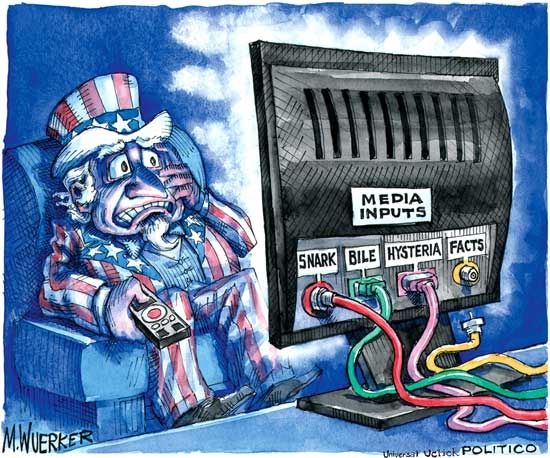By Jeffrey Cimmino • Washington Free Beacon
The Washington Post issued an editor’s note Thursday admitting inaccuracies in its initial reporting on a January incident involving Native American protesters, high school students from Covington, Ky., and a group known as Black Hebrew Israelites.
The note sweeps away the provocative details that turned the story into a phenomenon, including the accusation that Covington students prevented Native American activist Nathan Phillips from moving away.
“A Washington Post article first posted online on Jan. 19 reported on a Jan. 18 incident at the Lincoln Memorial,” the statement begins. “Subsequent reporting, a student’s statement and additional video allow for a more complete assessment of what occurred, either contradicting or failing to confirm accounts provided in that story — including that Native American activist Nathan Phillips was prevented by one student from moving on, that his group had been taunted by the students in the lead-up to the encounter, and that the students were trying to instigate a conflict.”
The editor’s note acknowledges that the high school student facing Phillips contradicted the latter’s account of the incident, and that “an investigation conducted for the Diocese of Covington and Covington Catholic High School found the students’ accounts consistent with videos.” The statement adds that the Post reported on these subsequent developments.
The student at the center of this imbroglio, high school junior Nick Sandmann, filed a $250 million defamation lawsuit against the Post, and his attorneys claim the newspaper led a “mob of bullies which attacked, vilified & threatened” him.
In January, film emerged of Sandmann and a group of Covington Catholic high school students, many of whom were wearing “Make America Great Again” hats, appearing to taunt Phillips, a Native American and veteran, near the Lincoln Memorial. Initial reactions on social media condemned the mostly white students for seeming to mock Phillips.
Phillips initially claimed he saw the students taunting indigenous peoples near the memorial and tried to walk towards the monument before being blocked, but later said he stepped into the crowd to defuse tensions between the students and a nearby group of extremists known as Black Hebrew Israelites. Video showed Phillips banging his drum inches from Sandmann’s face, and Phillips claimed to feel threatened and blocked by the student.
Sandmann countered Phillips’ account, saying he was confused when Phillips approached him and was trying to calm down a tense situation. Sandmann added the students were engaging in school cheers before Phillips approached, in response to expletive-laden taunts being hurled at them by the Black Hebrew Israelites. Video released later shows this to have been the case.
Additional video revealed the students did not chant “Build the wall” or “Trump 2020” as Phillips claimed, and showed the students did not surround Phillips—he walked into their midst.
The Diocese of Covington announced earlier this month that an independent investigation exonerated the students and showed they “did not instigate the incident that occurred at the Lincoln Memorial.”
“In truth, taking everything into account, our students were placed in a situation that was at once bizarre and even threatening,” Bishop Roger Foys said. “Their reaction to the situation was, given the circumstances, expected and one might even say laudatory.”

